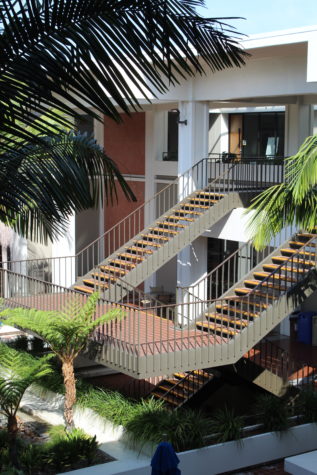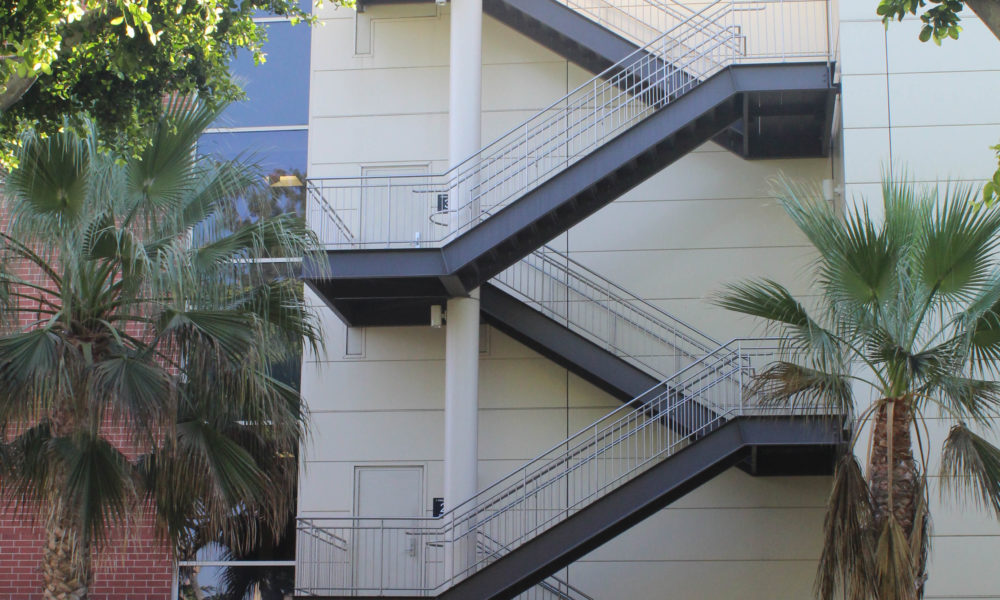There are over 1,800 students with disabilities who attend Long Beach State, making up almost 5% of the campus population.
Since much of the school was constructed before 1990, when the Americans with Disabilities Act was passed, there are some buildings on the campus that aren’t accessible.
However, according to Mark Zakhour director of construction and design at CSULB, the facilities department is always working on ways to improve accessibility on campus.
“It’s not always feasible to fix the physical barrier, but we always ensure the [programs are] accessible,” Zakhour said.
For Rachel Hultger, a third-year anthropology major and first-year transfer student, getting used to a new campus is hard enough even without the wheelchair she uses to get around. Hultger has spent most of her break time during her first semester to explore the campus.
Hultger transferred from Shasta College in Redding, California, and she said that that campus was mostly flat so she had little to no issue with accessibility there. CSULB is a campus full of stairs, but there are elevators and ramps for people who cannot use stairs to utilize.

The twists and turns of the accessible route through campus make wheelchair travel take longer than routes that include stairs. Hultger said that if she absolutely needs to, she can take the stairs.
“While I am a disabled person, I’m pretty lucky that I’m pretty mobile,” Hultger said. “If I really had to get up the steps I could pick up my chair and do it, but that’s not a choice for other people.”
Hultger has Brittle Bone Disease, which means that her bones are fragile and break easily. This condition is rare, with fewer than 20,000 cases per year, and can’t be cured. She said that her larger leg bones are the ones that are most affected.
As a kid, Hultger walked a lot more than she does now because the effects of Brittle Bone Disease worsen with age. She mostly only walks at home to make sure that she is safe at all times.
“When I fall down, I break my leg,” Hultger said.
When Hultger uses doors she tends to use handles as opposed to the automatic door buttons because she’s used to them not working. Zakhour said that custodians check the automatic door buttons every day to make sure that they work, and if they don’t they will usually be fixed within an hour.
Zakhour is a campus certified access specialist, which means he is able to evaluate accessibility issues and review all building plans to make sure that the campus is accessible.
“Even if someone wants to buy a desk, I review it to make sure that it isn’t going to restrict access,” Zakhour said.
Zakhour is one among many other faculty members on campus that are part of the Barrier Removal Committee. The committee meets every two months to review issues that they’ve received that they couldn’t fix right away.
They also review the large number of ongoing projects that facilities has planned to make sure that every project has provisions for accessibility. One of the larger projects that is in the works is the tear down of buildings FO4, FO5 and PH1.
The buildings were constructed in the 1970s so only the first floors are ADA compliant, and PH1 is on the state’s seismic priority list, which indicates an urgent need for upgrades. Facilities is working on getting funding from the state to tear down the three buildings and build new ones.
The buildings are so old that Zakhour said the way that they were built makes it nearly impossible to renovate them, which is why they chose to build whole new buildings. The new buildings will be ADA compliant.
“We play a big role in the physical aspect of accessibility,” Zakhour said.
Since transferring to CSULB, Hultger said that her biggest issue was finding a place to live. She originally wanted to live in the dorms, but the waitlist was so long that she was told she had no chance at making it.
From there, she contacted the Bob Murphy Access Center for help, and she was directed to the Long Beach Disability Center only to hear that they also had a waitlist that was five years long. Hultger was left to move to Long Beach from Redding, an almost nine-hour drive, a week before school started with no place to live.
She quickly found a place to live before classes began that was accessible. Her only problem now is the steep ramp near E. James Brotman Hall that she said requires a lot of strength to maneuver up.
“To a point, I can see the accessibility problems,” she said. “But there are things I can do in my daily life that make me more mobile.”




